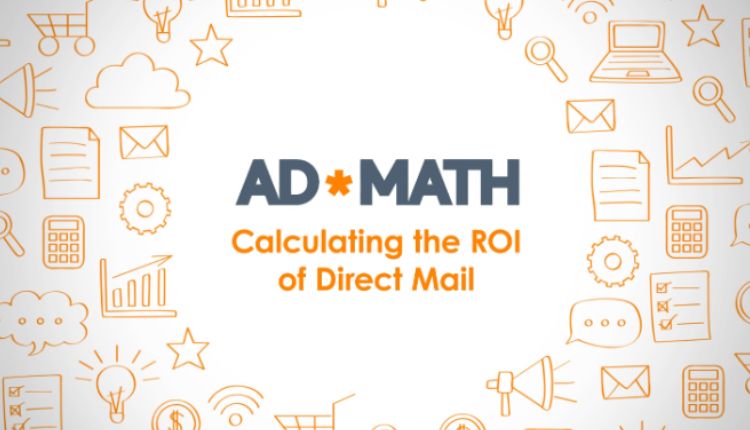There’s something refreshingly tangible about pulling a postcard or flyer out of the mailbox. However, sending out a stack of mailers without knowing if they’re bringing results would be an utter business failure. Businesses need to understand how to measure the return on their efforts, and that’s where calculating ROI becomes essential. This article explores how businesses can figure out the impact of their direct mail campaigns by using seven solid methods.
Tracking Response Rates
Understanding how well a campaign performs starts with a direct mail ROI calculator. This simple tool lets companies input major figures like total cost and number of responses to figure out what they’re getting back. It simplifies complex data into clear results, helping marketers see exactly how their mail is performing. Having this clarity upfront makes it easier to refine strategy and set realistic expectations for future campaigns.
Tracking response rates is the foundation of ROI measurement. It tells how many people actually acted on the mail—whether they visited a website, used a coupon, or called a number. By knowing the response rate, businesses clearly understand what works and what doesn’t. That insight is the first step toward creating more targeted, cost-effective mail efforts.
Using Unique Call Tracking Numbers
Assigning a unique phone number to each mailer can be crucial for tracking. When customers call that number, businesses instantly know the call came from that specific campaign. This makes it easy to spot which campaigns bring real interest and which need a tweak. It’s a small detail that can reveal a lot about timing, message effectiveness, and audience response.
This method helps separate leads from other channels like online ads or word of mouth. With call tracking in place, measuring the number of interested leads becomes much easier and more reliable. It’s one of the most accurate ways to connect phone activity with direct mail efforts. It can also show which regions or audiences respond best, offering valuable targeting insights.
Businesses Include Personalized URLs (PURLs)
A personalized URL is a custom link printed on the mail piece. It leads to a page made just for the recipient—usually with their name or a special offer. These unique links make tracking individual responses simple, thus offering deeper insights into customer behavior. This approach blends digital tracking with physical outreach, which helps bridge the online-offline gap.
When a person visits that unique link, businesses can track their visit and how they interact with the site. This approach shows engagement and allows brands to modify their message, making the experience feel more personal and memorable. That extra touch often leads to higher conversion rates. When customers feel seen and valued, they’re more likely to take action.
They Leverage Coupon Codes for Clear Attribution
Coupon codes are a classic method that still works well today. By printing a unique discount code on each mail piece, companies can tie purchases directly to their campaign. These codes are easy for customers to use and easy for businesses to track across sales channels. They further create a sense of urgency that encurages quicker action from recipients.
Once customers use these codes during checkout, it becomes easy to count conversions. It also allows a chance to test different codes across regions or demographics to see what resonates best. It’s a low-tech, high-impact tactic that offers real-world results. Over time, these insights can shape smarter offers that appeal to specific buyer habits.
Analyzing Customer Purchase Behavior Post-Campaign
Looking at how customers behave after receiving direct mail can reveal valuable insights. Did they buy more? Did they return sooner than usual? Behavior patterns after a campaign often tell a more complete story than simple response numbers. These patterns help paint a fuller picture of long-term customer value, not just quick wins.
Businesses can compare customer activity before and after a mail campaign to spot trends. If spending jumps or visit frequency increases, that’s a good sign that the message has hit home. Even a small uptick can lead to big returns over time when scaled across a customer base. Seeing these shifts helps companies make informed decisions about future outreach and timing.
Businesses Measure Revenue Generated per Mail Drop
Instead of only focusing on responses, businesses should look at actual dollars brought in. Calculating the revenue from each batch of mail gives a real sense of profitability. It helps determine whether the money spent is truly driving value or just adding to the noise. Besides, it shows how efficiently each dollar invested is working to bring back more.
To do this, compare the money spent on printing, design, and postage against the revenue directly linked to the campaign. Subtract costs from earnings, and that’s the ROI in its most honest form. Thus, tracking revenue helps shift focus from just activity to actual results that impact the bottom line.
They Compare Campaign Results Against Baseline Performance
Having a baseline—normal performance without direct mail—helps reveal the real impact of a campaign. Think of it like a control group in a science experiment. Without this comparison, it’s hard to know if success came from the mailer or something else. The baseline acts as a filter, helping to remove guesswork from performance reviews.
If sales or leads spike only when direct mail is sent out, the campaign likely made the difference. Comparing before-and-after snapshots over time also helps identify seasonal patterns and customer cycles. It’s a smart way to spot what’s actually moving the needle versus what’s just business as usual. With consistent tracking, these comparisons become more accurate and useful over time.
Is There an Easy Way to Calculate Direct Mail ROI Without Complicated Spreadsheets?
Many businesses want to track the success of their direct mail efforts but get stuck organizing the numbers. Manually adding up costs, responses, revenue, and other factors in a spreadsheet can take hours, and mistakes are easy to make. Even small errors in tracking can lead to misleading data, which affects future decisions. Not everyone has the time or patience to build complex formulas or chase down data manually.
That’s why simple online tools built specifically for calculating ROI have become more popular. These user-friendly platforms allow teams to plug in their campaign details and get quick, clear results. With everything laid out in one place, it’s easier to understand performance, make better choices, and avoid the stress of messy data. These tools offer a practical, no-fuss alternative for teams that are looking to save time and reduce human error.
Using a direct mail ROI calculator gives businesses a straightforward starting point to measure what matters. It turns vague ideas into solid numbers and helps guide future decisions with more confidence. With the right approach, even the simplest campaign can bring strong results and lasting connections.






